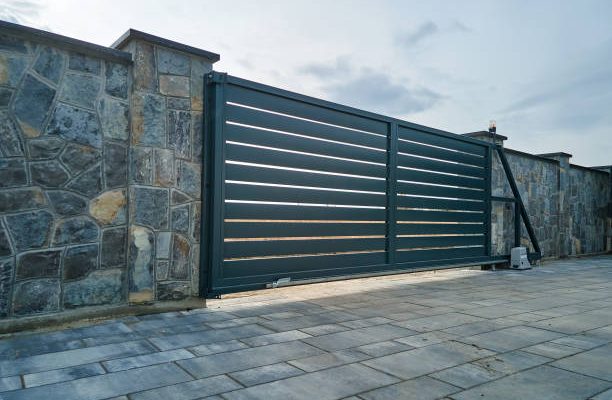Fence fabrication is the art of creating beautiful, yet durable barriers that are designed to protect property and provide safety. Whether you are looking to install a permanent fence or create a temporary solution, understanding the basics of fence fabrication will help you make an informed decision about your next project. Let’s take a look at the basics of fence fabrication so that you can make sure your next project is as successful as possible.
Building Materials
The materials used in fence fabrication plays a major role in both the aesthetics and durability of the final product. Common choices for fencing include wood, vinyl, aluminum, steel, and wrought iron. While each material has its own unique characteristics and benefits, there are some general guidelines that can help guide your decision making process.
For example, if low-maintenance is important to you then vinyl or aluminum may be better options than wood or steel. If aesthetics are key for your project then wood may be the ideal choice due to its natural beauty and wide range of design options.
Installation Process
The installation process for any type of fence is critical for ensuring that it will last for years to come. Depending on the type of material you choose and size of the project, the installation process can take anywhere from one day to several weeks. It is important to hire professionals who have experience installing fences so that they can do it correctly and efficiently. Additionally, they will also ensure that all necessary permits and other legal requirements are met before beginning work onsite.
Step 1: Plan & Design Your Fence
The first step in installing a fence is to determine the type of fence that best suits your needs. Do you want a decorative fence or one with added security features? You also need to decide on the size and height of your fence, as well as any additional features like gates or access points. Once you have settled on the design of your fence, make sure that you have all the necessary materials and tools available before starting the installation process.
Step 2: Remove Existing Fencing
If there is an existing fencing structure in place, it will need to be removed before starting your new installation. Make sure that any nails are safely removed from the structures and disposed of properly. If there are any old posts still in place, these will need to be dug out of the ground as well.
Step 3: Install New Posts & Prepare Site
Once any existing structures have been removed, it’s time to start installing your new posts. Depending on how large your fence is going to be, this could take several hours or even days if it’s an extensive project. Be sure to check local building codes for regulations regarding post depth and spacing requirements when installing new posts. You may also need to prepare the surrounding area by leveling off any low spots and removing debris or obstructions from the path of your new fencing structure.
Maintenance and Repair
No matter what type of fence you decide on fabricating, proper maintenance is essential for keeping it in good condition over time. Generally speaking, wooden fences require more maintenance than other materials such as vinyl or aluminum due to their susceptibility to warping and rotting over time if not properly cared for.
Steel fences tend to require less maintenance but should still be inspected regularly for rust or other forms of corrosion that might compromise its structural integrity over time. No matter what material you choose, regular inspections and repairs should be part of any successful fencing plan going forward.
Understanding the basics of fence fabrication is key when deciding on a new project or repair job around your property or business premises . Taking into consideration building materials , installation process ,and long-term maintenance needs will help ensure your fencing project succeeds . By hiring experienced professionals who understand these fundamentals ,you can rest assured knowing your new barrier will stand tall for years to come .




















